#dlpprojector
Explore tagged Tumblr posts
Text

📽️ BenQ MX560 XGA Business & Education Projector – Power Your Presentations! 🔥
Elevate your business or classroom presentations with the BenQ MX560 Projector. Featuring 4000 lumens brightness, 20000:1 high contrast ratio, and an extra-long lamp life of up to 15,000 hours. Ideal for clear, vibrant images and smooth presentations.
🛒 Available for Sale Now!
Get the BenQ MX560 Projector and enhance your presentations today!
📞 Contact Us for More Information!
For pricing and details, feel free to reach out.
#BenQProjector #BusinessProjector #EducationProjector #XGAProjector #HighBrightness #DLPProjector #LongLampLife #3DCapable #ProjectorForSale #BenQMX560 #ProjectorUAE
#BenQProjector#BusinessProjector#EducationProjector#XGAProjector#HighBrightness#DLPProjector#LongLampLife#3DCapable#ProjectorForSale#BenQMX560#ProjectorUAE
0 notes
Text

#digitallightprocessing#dlptechnology#dlpprojectors#3dprintingtechnology#digitalmicromirrordevice#dlpadvantages#hometheaterprojectors#3dprinters#dlpvslcd#dlpcinemaprojection
2 notes
·
View notes
Photo
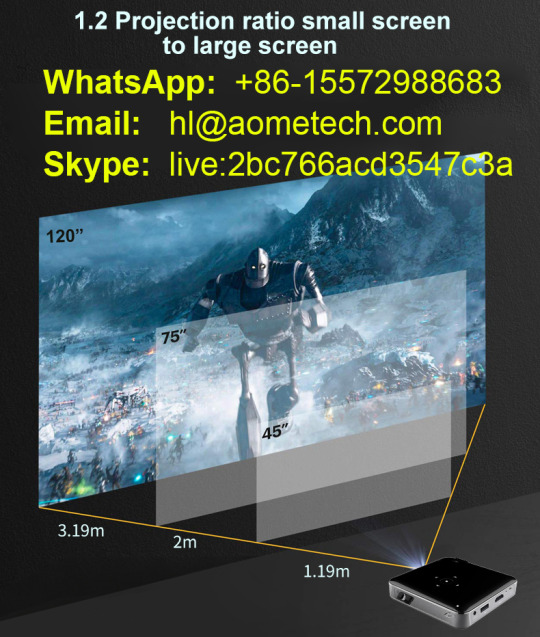
DLP mini portable projector android 7.1 OS with wifi and bluetooth,wireless for mobile phone.Support HDMI input and USB input,home theater 1080p screen.
#mini projector#home theater#portable projector#homecinema#projector#projectors#dlp#ledprojector#dlpprojector
1 note
·
View note
Video
instagram
When You're Stuck At Work Doing Some Last Minute Memos Before New Years & You Forgot Your Laptop & Tablet...No Problem!... (Whips Out DLP Pocket Projector, Casts Samsung DEX Desktop Via Projector On A Powerless Monitor) *Cracks Fingers* #AndroidSolution #Samsung #Android #SamsungDEX #DEXDesktop #DLPProjector #PocketProjector #Portable Projector #Projector https://www.instagram.com/p/CJeEv2Flkma/?igshid=1o9x8rs95zv5t
#androidsolution#samsung#android#samsungdex#dexdesktop#dlpprojector#pocketprojector#portable#projector
0 notes
Photo

This smart looking piece of kit arrived today.... @apeman #apeman #projector #M4 #dlpprojector #DLP #projectors #tech #technology #miniprojector #portable #youtube #youtuber #gadgets #movie #review #reviews https://www.instagram.com/p/B_95io_gq42/?igshid=h860atqz2i3h
#apeman#projector#m4#dlpprojector#dlp#projectors#tech#technology#miniprojector#portable#youtube#youtuber#gadgets#movie#review#reviews
0 notes
Photo
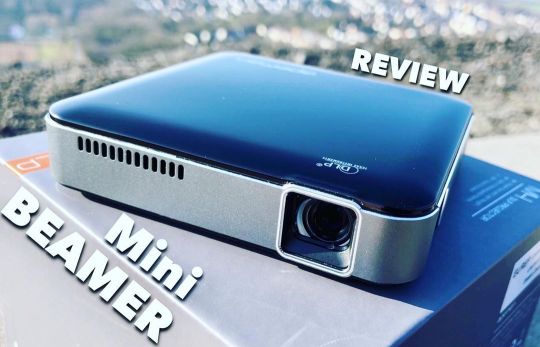
Ein echter MINI Beamer - Apeman M4 DLP im Test - Kleines Gimmick oder großes Kino ? REVIEW https://youtu.be/0HqpeWAqOEU #beamer #apeman #minibeamer #ledbeamer #proj #ledprojector #dlpbeamer #dlpprojector #y #Review #Test #deutsch #meapplecat #heimkino https://www.instagram.com/p/B_XNlfUnaIo/?igshid=1fr8og1zqt5th
#beamer#apeman#minibeamer#ledbeamer#proj#ledprojector#dlpbeamer#dlpprojector#y#review#test#deutsch#meapplecat#heimkino
0 notes
Text
ViewSonic PRO7827HD projector

As known, the cost of TVs with a large diagonal does not decrease. Models with a screen of 60 "or more are quite expensive. Probably, this trend will not change significantly in the near future. Today, companies continue to increase their resolution (8K, 10K), supported color depth (10-bit and 12-bit color grading with HDR 10+, Dolby Vizion, HLG (Hybrid Log-Gamma) support), HDMI 2.1 (48 Gbps) connection standard, HFR (high frame rate) format, etc. For example, a presented at CES 2019 new LG Signature Rollable OLED TV with flexible screen amazed the most imperturbable viewers.
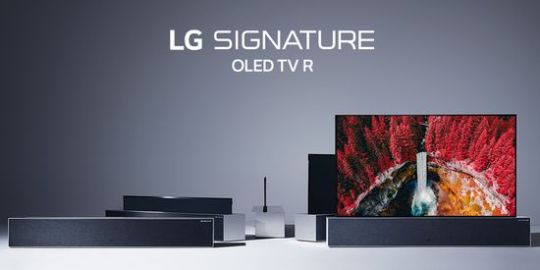
In addition, companies are constantly improving the technologies of matrices. For example, Nano Cell and Micro LED technologies perfectly illustrate this trend. Unfortunately, the cost of innovative TVs is also increasing. For example, the gorgeous LG OLED 8B 2018 is positioned as a “budget” model due to the price of less than $ 1000. On the other hand, the projector segment is also not standing still. Today, the companies offered quite a lot of 4K HDR models, including Optoma UHD60, BenQ HT3550, Epson 4010, etc. At the same time, the cost of Epson Home Cinema 4000, for example, does not exceed $ 2,000. Given the projection diagonal size (from 150 to 300 inches) and its quality, the appeal of this solution increases for many consumers. As a result, modern projectors have become a good alternative for many users. Of course, the screen 300" is impressive compared to the traditional 50-60".
ViewSonic PRO7827HD
In addition, companies traditionally lower prices for their previous models. As a result, the market offers excellent models at a fairly reasonable price. Of course, the ViewSonic PRO7827HD refers to this type. Today, its price on Amazon is only $ 750. Image quality of Full HD format provides enough comfort for viewing even on a large screen. Video hosting and online services have long offered video in this format. Of course, their assortment is much wider compared to 4K-content. Therefore, Full HD models are still very popular for home theater. UHD projectors of 4K format are actively promoted in the market. However, the limited amounts of 4K-content and cost of these models limit process. Therefore, UHD projectors remain an exotic novelty for most users. Black plastic, glossy stripes and a matte surface give the projector a stylish design that fits perfectly into any interior.
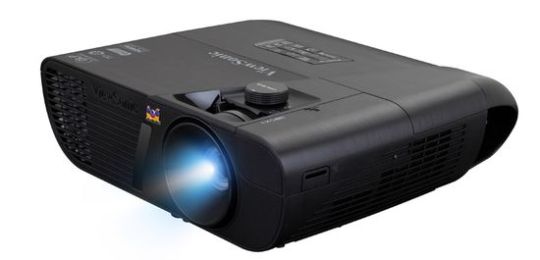
The projector has a relatively small size, but weighs more than 5 Lb.
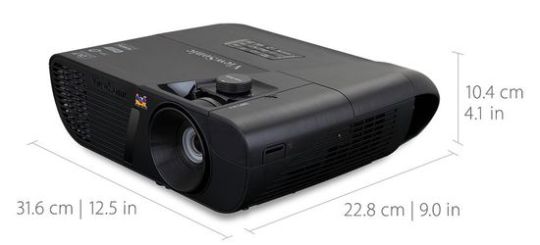
ViewSonic Pro7827HD has a resolution of 1920x1080 and supports 3D. Сontrols on the upper surface and remote control provide easy and convenient navigation.
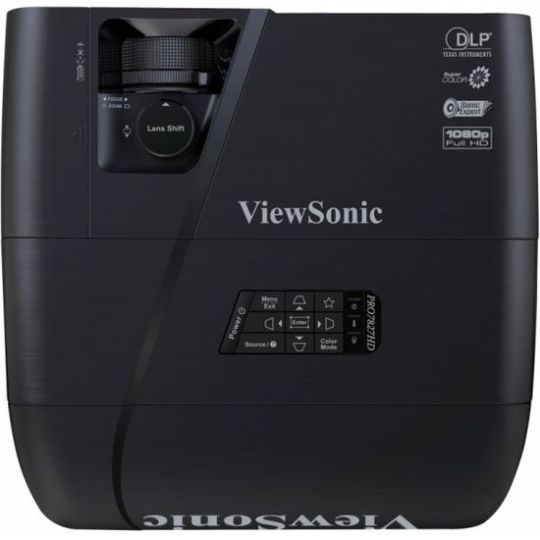
Additionally, projector provides connection of analog and digital sources. It has a hidden compartment with HDMI / MHL, two HDMI ports on the rear panel (including one with MHL) and USB to connect wireless modules.

Key features
According to spec, model provides 2200 ANSI-lumens. But testing demonstrates up to 1400 lm in colors and up to 1744 - in white. However, this brightness provides enough image quality even without full dimming in diffused daylight. Color brightness reaches 80% of the white brightness in dynamic mode. BrilliantColor value in the additional image settings reaches 10, that corresponds to the maximum white magnification. But standard mode uses 4. Respectively, maximum brightness decreases in this mode up to color brightness. ViewMatch and Film (Rec.709) modes do not use BrilliantColor (BrilliantColor value=1). Thus, the dynamic mode is designed for less darkened rooms; Standard and Film (Rec.709) modes are optimal for rooms with good dimming. ViewSonic Pro7827HD demonstrates an excellent level of "honest" contrast ratio for this segment (measurement method-full on/full off ). It reaches 1300:1 in the film (Rec.709) mode. Projector supports sRGB and Rec.709 color standards, has ISF certified calibration mode and a special profile for movies. As known, certified calibration (ISF- Imaging Science Research) provides an almost perfect picture.
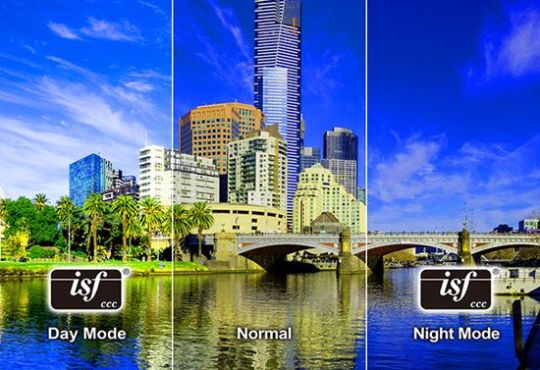
Moreover, acoustic system with a power of 10 W provides a very clear sound with SonicExpert technology. Sound tract uses a modern sound-emitter, providing high sound quality with an optimum sound response. The audio system is configured in Sonic Mode. Projector also uses SuperColor technology to extend the color range. SuperColor RGBRGB technology provides a very realistic image due to excellent display of color gradients. The RGBRGB color wheel in conjunction with dynamic lamp control ensures acceptably high image quality even at bright enough lighting.
Pros & Cons
Unfortunately, ViewSonic Pro7827HD has the rainbow effect, which is present in almost all single-matrix DLP projectors. As known, this effect forms red-green artifacts along the contour of high contrast objects.
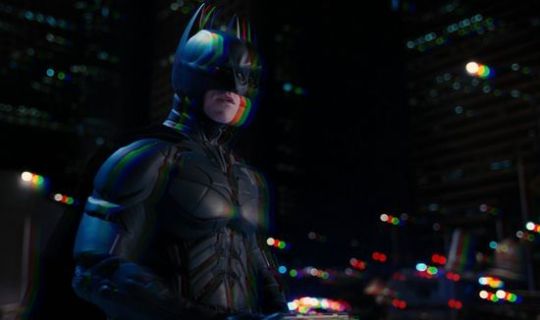
Unfortunately, the six-segment RGBRGB color wheel compensates it incompletely. Bright subtitles sometimes also provoke this effect. Service life of the lamp varies from 3500 to 6500 hours. This corresponds to about five years of operation with a daily two-hour viewing. A sufficiently short throw lens provides a throw ratio of 1,1: 1. Projector has optical zoom of 1.3x and Vertical Lens Shift with adjustment range of 20% of the image height. Model provides 100" screen diagonal at a distance from 8,5 to 11 ft (2,6 - 3,3 meters). High accuracy of the color rendering in the Film (Rec.709) mode does not require additional setting. Projector also has a simple and convenient manual adjustment of the white balance. PROS - high brightness; - very high contrast ratio; -SonicExpert technology; -ISF calibration support; - wide color gamut; - SuperColor RGBRGB color wheel; - superb black level; - high stability of color temperature; - high color accuracy and good sRGB colors without additional adjustments; - almost perfect image after calibration; - HDMI / MHL connectors. CONS - rainbow effect in darkened scenes with high contrast; - too large an input lag in games; - uneven luminous flux; - sufficiently high noise level of the fan; - average service life of lamp; - power consumption reaches 350 W. Of course, all these factors affect the choice of the optimal projector. This video offers side-by-side comparison between ViewSonic PRO7827HD vs EPSON EN-TW 5300 Read the full article
#BenQHT3550#BrilliantColor#DLPprojector#Epson4010#ImagingScienceResearch#ISFcalibration#OptomaUHD60#SonicExperttechnology#SuperColorRGBRGBcolorwheel#VerticalLensShift#ViewMatchmode#ViewSonicPRO7827HD
0 notes
Photo

#projector #dlpprojector #lamp #panasonic #lenz #stacking
1 note
·
View note
Text
Projector Type: DLP | Contrast Ratio: 15000:1 | Resolutions: 480i, 480p, 576i, 576p, 720p, 1080i, 1080p | Connections (Video): HDMI x 2, Composite Video (RCA) x1, VGA x1 | Connections (Audio): Mini Jack x 2 | Connections (Misc.): USB (Mini) x 1, RS232 (DB-9pin) x 1 |Max. Image Size: 30″ – 300″ | Light Output: 2200 ANSI Lumen Accessories Included: Remote Control w Battery, Warranty Card (by region), Power Cord (by region), VGA cable, QSG
What is it?
The BenQ HT1070A is a 1080p plug-and-play DLP projector capable of creating images from 60 inches all the way up to 300 inches (for roughly the same price as most televisions on the market).
What does it do?
The projector is capable of generating a 100-inch picture with as little as 2.8m of space. The unit’s small footprint makes it incredibly versatile and travel-friendly, plus the ease of set up gets you a picture on a wall or screen in minutes. With dedicated picture modes at the ready, you are guaranteed a solid picture whether you’re watching Monday Night Football, playing the latest Assassin’s Creed game or watching Stranger Things on Netflix in full 1080p definition.
What’s wrong with it?
It would be easy to break down all the wrongs, but before I do, I wanted to touch on some vital items you should know when considering a projector for your home theater – the main one being space. If you want a 100-inch picture, you better either have a wide open wall, a drop-down screen or a free-standing screen because too often people overestimate how much space they have because they’re enamored with the fact that a 100+ inch screen is within their grasp for cheap.
Next thing to be aware of is lighting, as it can make or break a good picture on a projector. Think of a trip to the movies and how dark it needs to be to see a clear and vibrant picture. Same rules apply here folks! This particular projector is an all-star in little to no light but turn on a lamp or room lighting or use it during the day in a well-lit living room and your picture will be washed out, which is a shame as the color has to be seen to be appreciated.
This projector has a built-in 10-watt speaker which while good, is a bit tinny. I recommend a soundbar or a good receiver to give you the best sound although you’ll need some adapters due to the 3.5mm audio inputs. I would have liked an optical in or other digital audio option.
The last thing to be aware of with projectors including this one is lamp replacement. Most projector lamps have lifespans comparable to televisions (depending on usage) but the beauty of a projector is that if the light burns out it’s as simple as buying a new one which can run you from $150-$300 depending on the retailer. Then you just have to swap it out. It is an added cost to consider, but one that cannot be ignored regardless of how good the unit is.
Why do you/don’t you need it?
Why you “need” it: A good projector can replace most big screen televisions with comparable pricing easily. The HT1070A offers a lot of compelling reasons why it can be the centerpiece of your home theater. For starters, beautiful and vibrant colors, plus a variety of connection options including HDMI, VGA, and composite video give you ample options for use. You can connect most modern consoles, cable boxes and laptops easily including those older laptops and PCs with a VGA out.
Why you don’t “need” it: If you are looking to just plug something in and be off to the races then this projector is not for you. It requires ample space if projecting onto a wall or the added expense of a drop-down or free-standing projector screen which you’ll need to buy if no wall is available.
The need to modify the audio outs may also be cumbersome if you’re looking to integrate the projector into your home theater set up.
My Take:
Growing up, I wondered what it would be like to play video games on a giant movie screen and the ability to do so is now possible. I thoroughly enjoyed using and reviewing this projector. The biggest issue for me was getting sound to an external device and not relying on the included in body speaker for audio. While the sound was passable, it definitely could have been better. The sound was along the lines of most speakers found on flat panels. A good workaround with regard to the sound options that I heard about from a projector owner was to use a Logitech PC 5.1 system or one of the new ones by Razer, but I had a perfectly good Vizio 5.1 that I would have preferred to use. Beyond the sound issues though, the picture quality offered by the projector was top notch especially in dimly lit or totally dark instances. While the gamer in me loved the giant display, the real showcase was movies. Films with overly dark scenes did not look washed out thanks in part to the high contrast ratio, which delivered true blacks while maintaining all the minuscule details. You look at a film like Pitch Black with new eyes given the impeccable color presentation being displayed. This projector is tailor-made for a basement home theater and should be considered if you’re in the market for one. As I mentioned earlier in my review, please do your homework if you’re considering a projector and feel free to reach out to us if you have questions about this one.
Product Photos
[symple_box color=”red” fade_in=”false” float=”center” text_align=”left” width=””]BenQ HT1070A review unit provided by InGear[/symple_box]
4W Product Review: BenQ HT1070A Projector Projector Type: DLP | Contrast Ratio: 15000:1 | Resolutions: 480i, 480p, 576i, 576p, 720p, 1080i, 1080p …
#1080pProjector#4W Review#BenQ HT1070A#BenQCinematicColour#BenQProjector#DLPProjector#FullHDProjector#HomeEntertainmentProjector#Rec.709StandardProjector
0 notes
Text
DLP Projector is the the first choice of Home Projector

If you want to buy a Home Projector, the DLP Projector must be the the first choice, is the most practical! about DLP projector, Toumei C800i be worth to have a look, won't let you down. #DLPProjector #brightness #HomeProjector #ToumeiC800i #DLPtechnology #Compare
0 notes
Photo

Comment below or inbox us or feel free to contact us @9962923493 / 94 for more related products and their best price! Visit www.keensecure.in, www.keensecure.co.in, www.keensecure.com for more product details! #CineHomeProjectors #LaserProjectors #4KProjectors #LEDProjectors #LCDProjectors #DLPProjectors #KeenSecure
0 notes
Video
youtube
LG HU70LA Review Pros & Cons - LG CineBeam UHD 4K Projector
LG CineBeam UHD 4K Projector HU70LA - DLP Home Theater Smart Projector with Alexa Built-In, White
LG HU70LA Review - https://trendyprojectors.com/lg-hu70la-review-dlp-home-theater-smart-projector/
Pros
Great color contrast and black levels
The LG UI feels like using a smart TV.
The remote is very good.
Reasonable price
Good for gaming too as it has a low input lag.
Easy setup
Extremely quiet
It starts up and shuts down in few seconds.
Excellent image
Good Bluetooth sound connection
#lghu70la #lgcinebeam #lg4kprojector #dlpprojector
Cons
No horizontal / vertical lens shift
No horizontal keystone
Some users are unable to watch Netflix, Disney+ and HBO etc.
LG HU70LA Review - https://trendyprojectors.com/lg-hu70la-review-dlp-home-theater-smart-projector/
0 notes
Text
Laser projector vs lamp projector

As known, the light source is one of the main and expensive elements of the projector and significantly affects its choice. Its cost can reach 20-30% of the model value. The power of the light source directly affects the projector brightness. In turn, the brightness affects the requirements for dimming. For example, a low-power portable projector with a brightness of up to 100 ANSI Lm can provide acceptable quality only in a dark room. A powerful 3LCD projectors with a brightness of 2500-4000 ANSI Lm work fine even in diffused light without additional dimming. Unfortunately, even such models do not provide acceptable quality in direct sunlight. But, a powerful lamp requires effective cooling. Therefore, such projectors usually have a fairly high noise level due to a powerful fan. Modern projectors use mercury or xenon lamps, semiconductor (LEDs and laser LEDs) or hybrid light sources.
Lamps
Most projectors traditionally use UHP (Ultra High Efficiency) mercury lamps as a light source.

They combine a relatively low price, ease of replacement and high brightness. The approximate life of modern lamps reaches 3000 - 5000 hours in maximum power mode, and their power varies from 200 W and more. The lamp generates a stream of white. Special color filters in 3LCD projectors or in the color wheel of DLP models divide it into red, green, blue, etc streams. Unfortunately, UHP lamps provide white with a green tinge. Usually, companies compensate for the excess green with optical filter or by limiting its brightness. For example, many models use Dynamic or Cinema image modes. The first mode uses maximum brightness, but with a green tint, and the second mode provides more accurate color rendering, but with reduced brightness. High operating temperature is a major cons of UHP lamps. It requires intensive cooling with a sufficiently powerful fan. Unfortunately, they have a fairly high noise level, which reduces viewing comfort. Therefore, this value is one of the main projector specifications. Setting the optimum lamp brightness mode has a slight delay. Reducing the brightness of the lamp over time also applies to their disadvantages. However, today these lamps are a proven, high-quality, bright and inexpensive projector light source. Powerful xenon lamps generate a more balanced white with a perfectly even emission spectrum, providing more accurate color rendering.

Unfortunately, they are much more expensive and less effective. However, high-end projectors often use them.
Semiconductor light sources (LED and laser LED)
Modern models are increasingly using semiconductor light sources, including LEDs or laser LEDs. They generate a very narrow emission spectrum with pure rich colors that do not require special filters to separate colors from the white spectrum. Of course, this feature is very important for modern video standards, for example, for Ultra HD. Power and cost are the main differences between laser and LED light sources. Laser LEDs, especially green ones, have a higher cost of production, but they provide much more power.

The brightness of the LED light source usually does not exceed 500-700 ANSI Lm.

As a rule, expensive projectors use laser light sources. Portable models based on one-matrix DLP technology often use an LED light source. The segment of portable (Cube, Pocket, Pico, Mini) projectors today leads in the growth of popularity. These models do not have a color wheel and provide instant response. Many modern projectors have a WiFi module. The miniaturized dimensions with wireless connectivity ensure their outstanding portability.

Additionally, these sources have a huge service life, which varies from 20,000 to 30,000 hours. For comparison, lamps usually work about 5,000 hours. On the other hand, this period corresponds to a daily 2-hour viewing for 7 years, which is more than enough given the obsolescence of the model. The power consumption and temperature of semiconductor light sources are also much lower compared to lamps. As a result, the lack of a powerful fan reduces their size and eliminates noise. But, unlike a lamp, their replacement requires contacting a service center.
Projectors with hybrid light sources (LED / Laser)
The LED light source provides low brightness of the green LED, and the laser source uses an overly expensive green laser. Some models, for example, Casio projectors, use a blue laser instead of a green LED that shines on a green phosphor. In this case, the blue laser simultaneously forms blue and green. But projector must use a rotating color wheel.

The service life of hybrid light sources usually exceeds 20,000 hours. But, the term of effective operation of the green phosphor may be less. As a result, the possible degradation of the brightness and saturation of green can reduce the overall service life of the device. Nevertheless, the service life of these relatively new models significantly benefits compared with lamp projectors. This video demonstrates the difference in clarity of the bulb projector on the left and laser projector right. Read the full article
0 notes
Photo
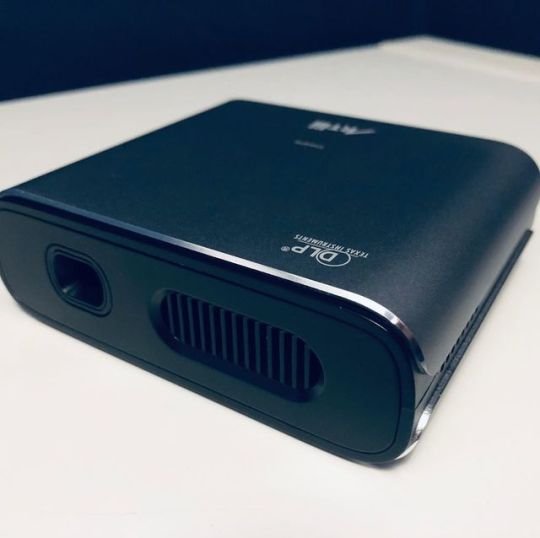
⬆️REVIEW LINK IN BIO!⬆️ Check out the incredible Artlii mini projector! @artliiofficiel #projector #projectors #artlii #dlpprojector #ledprojector #dlp #movies #film #youtube #youtuber #review #hd #portableprojector #awesome #tech #gadgets #review #reviews https://www.instagram.com/p/BxgCiC-hwn6/?igshid=gh4w0pm6pkzd
#projector#projectors#artlii#dlpprojector#ledprojector#dlp#movies#film#youtube#youtuber#review#hd#portableprojector#awesome#tech#gadgets#reviews
0 notes
Photo

Time to test this mini projector! Full review coming soon... #projector #projectors #ledprojector #dlp #dlpprojector #youtube #review #portable #projector #tech #gadgets #technology #movies https://www.instagram.com/p/BxaeYZ_B3Z4/?igshid=1mb9lyr54bkjx
#projector#projectors#ledprojector#dlp#dlpprojector#youtube#review#portable#tech#gadgets#technology#movies
0 notes
Text
DLP vs LCD vs LCoS projectors
As known, the whole history of the consumer electronics development is accompanied by fierce competition. It forces companies to constantly increase competitiveness, expanding the functionality of their models and reducing its costs. Of course, the solution of this problem requires the active use of innovative technologies. As a result, companies are investing heavily in their development. As a consequence, today the market often offers similar in consumer qualities models using different technologies. LED LCD, OLED (LG), QLED(Samsung) and NanoCell (LG), Micro LED models in a TV segment perfectly illustrate this trend. High-tech projectors are no exception. Today, models with DLP, 3LCD, and LCoS (D-ILA, SXRD) projection technologies successfully compete in the market. In addition, the development of the segment with LEDs and laser LEDs as light sources initiated the rapid development of portable models of various form factors (pico, cubed, micro, pocket). Moreover, advances in precision technology for manufacturing aspherical lenses and reflective mirrors pushed the development of very popular Ultra Short Throw (UST) projectors, which are able to create huge high-quality projections at a distance of several tens of inches. LG PF1000UW perfectly demonstrates these possibilities. Of course, this situation provides a very rapid improvement of household appliances that pleases consumers. Unfortunately, this wonderful trend has a side effect. Today, the conscious choice of the optimal device requires some effort from the consumer. Of course, the price and functionality remain the main criteria. The price depends entirely on company policy and we cannot influence it. But assessing the price / quality ratio is sometimes a difficult task because of the abundance of offers, which often contain a marketing component. Therefore, even a simplified classification can partially simplify this task.
Operation principle
As known, DLP (Digital Light Processing) uses a semiconductor DMD (Digital Micromirror Device) chip from Texas Instrument with an array of micromirrors to reflect light. In fact, each micromirror corresponds to one pixel. The control signal tilts the micromirror at an angle of ± 12 °, forming a white or black dot on the screen. The frequency of control signals in modern models reaches several kHz. Today, the company produces a wide range of DMD, including, for example, DLP 2000 (0.20 "), DLP 2010 (0.21"), DLP 230GP (0.23"), DLP 230KP (0.23"), DLP 230NP ( 0.23"), DLP 3010 (0.31"), DLP 3310 (0.33") and DLP 4710 (0.47"). They support display resolution from 640 x 360 (nHD) to 1920 x 1080 (1080 p or Full HD). But DLP projectors form a color image on the screen, alternating a sequence of projections with different colors and creating the illusion of a color image due to the high frame rate. The color wheel with segments of different colors serves as a color filter. As known, 3LCD technology was developed by Epson. It uses the influence of electricity on the spatial orientation of liquid crystal molecules. In fact, its matrixes work in the same way as traditional LCD matrices in TVs. But unlike the DLP projector, the 3LCD models form a color image with the help of special prism from three mono-color images. The LCoS (Liquid Crystal on Silicon) projectors combine the best qualities of DLP and 3LCD technologies. Today, its versions of SXRD (Silicon X-tal Reflective Display) from Sony and D-ILA (Direct Drive Image Light Amplifier) from JVC are the most popular.
Contrast ratio
Of course, the image quality dependents on the contrast. As known, this value characterizes the ratio of the brightness of the brightest and darkest pixels. Specs of projectors or TVs contain it in the form of, for example, 60,000: 1. Accordingly, the contrast depends on the maximum brightness and depth of black. In fact, contrast provides depth and dimension of the image, which affect the realism of perception. Today DLP technology in the DLP and LCoS projectors provides higher contrast compared to LCD models. The use of reflection allows engineers to achieve very deep black due to the complete cut-off of light. LCD matrixes use the light pass and cannot ensure its complete blocking. But on the other hand, powerful lamp 3LCD projectors partially compensate for this factor with higher brightness. Many models use effective Auto Iris technology, which adjusts the aperture depending on the illumination of the scene in the frame.
Brightness and color
The brightness characterizes the light intensity in ANSI lm or lm. It has several names, including the light output or lumens rating. This value mainly depends on the type of the light source in the projector. Today, lamps and lasers provide maximum brightness. But the lamps are quite expensive and have a limited service life (4,000-6,000 hours). Laser LEDs provide high power and long service life, but are expensive (mainly due to expensive green lasers). LEDs have a very long service life (20,000-30,000 hours) and are relatively inexpensive, but do not provide sufficient brightness. In turn, brightness affects viewing comfort. Low brightness requires dimming the room to produce acceptable image quality. High brightness provides it even in daylight. Unfortunately, powerful lamps get very hot during operation and require efficient cooling. In turn, the noise during the operation of powerful fan reduces the viewing comfort. Therefore, the choice of brightness represents a trade-off between durability, dimming requirements and noise level. The type of light source mainly depends on the positioning model (portable, home theater, etc) and does not depend on technology. But in general, the 3LCD models often use lamps, and DLP and LCoS - semiconductor light sources (LEDs or laser LEDs). Color accuracy, color range and saturation depend only on the model class.
Motion Blur and Input Lag
As known, this effect is visualized in highly dynamic scenes. Companies solve this problem by increasing the frequency or using the interpolation method that TV manufacturers have been using for years. This technology is based on the formation of intermediate frames by the processor. Today, almost all leading companies use this technology and own indexes for TVs, including Motion Clarity Index (MCI), Clear motion rate (CMR), Picture Quality Index (PQI), Perfect Motion Rate (PMR), Motionflow XR, etc. Unfortunately, increasing the processor load significantly increases Input Lag. Therefore, some projectors automatically disable it in game mode. As known, Input Lag is especially important in games. This value in many modern projectors does not exceed several tens of milliseconds. But some projectors provide an unprecedented low Input Lag, which allows them to be positioned as game models. For example, the Input Lag of UST ViewSonic PX800HD does not exceed 16 ms with 3X Fast Input option. With other things being equal, DLP projectors are confidently leading in this aspect compared to 3LCD and LCoS models.
Rainbow and Screen Door Effects, and Dust Resistance
Rainbow effect appears as multicolored points along the contour of contrasting objects in the frame. It's caused by using a color wheel and shown only in 1-chip DLP projectors. Increasing the speed of its rotation reduces the effect. However, today companies successfully solve this problem in various ways, including, for example, using the innovative RGBRGB color wheel. Of course, LCD and LCoS projectors do not have this effect due to the lack of a color wheel. Screen Door Effect is a visualization of pixels on the screen at a short distance. The high pixel fill factorI duu to the minimum distance between micro mirrors in the DMD chip almost completely eliminates this effect in DLP projectors. Unfortunately, 3LCD models, especially inexpensive, form an image with this effect due to the rather large distance between the matrix crystals. However, more expensive models successfully compensate for it by high resolution. LCoS projectors form an image without this effect. Of course, dust significantly reduces the quality of optics, which is one of the main components of any projector. From this point of view, DLP projectors have a great advantage, because DMD chips are superbly sealed. 3LCD and LCoS models use sealed or non-sealed chips. More expensive models have additional protection.
Conclusion
1. DLP projectors have minimum dimensions and weight. As a result, this technology dominates among portable models. LCoS projectors are the most heavy and large. 2) DLP models provide excellent deep black, but only medium contrast due to the relatively low brightness. LCoS provides better contrast. 3) Low-cost 3LCD models require periodic cleaning of LCD matrices due to insufficient dust resistance. 4)The pixels on the matrices of 3LCD models can burn out over time. 5) With the same specs, today LCoS models are the most expensive, and DLP projectors have a minimal price. Of course, all these factors affect the choice of the optimal projector. This video offers the review of all technologies in modern projectors, including DLP vs 3LCD vs LCoS. Read the full article
#AutoIristechnology#Clearmotionrate(CMR)#D-ILA#DigitalMicromirrorDevice#DirectDriveImageLightAmplifier#DLPprojector#DLPvsLCDvsLCoS#DMD#LCDprojector#LCoSprojector#MotionBlur#MotionClarityIndex(MCI)#MotionflowXR#PerfectMotionRate(PMR)#PictureQualityIndex(PQI)#rainboweffect#RGBRGBcolorwheel#Screen-Dooreffect#SiliconX-talReflectiveDisplay#SXRD
0 notes